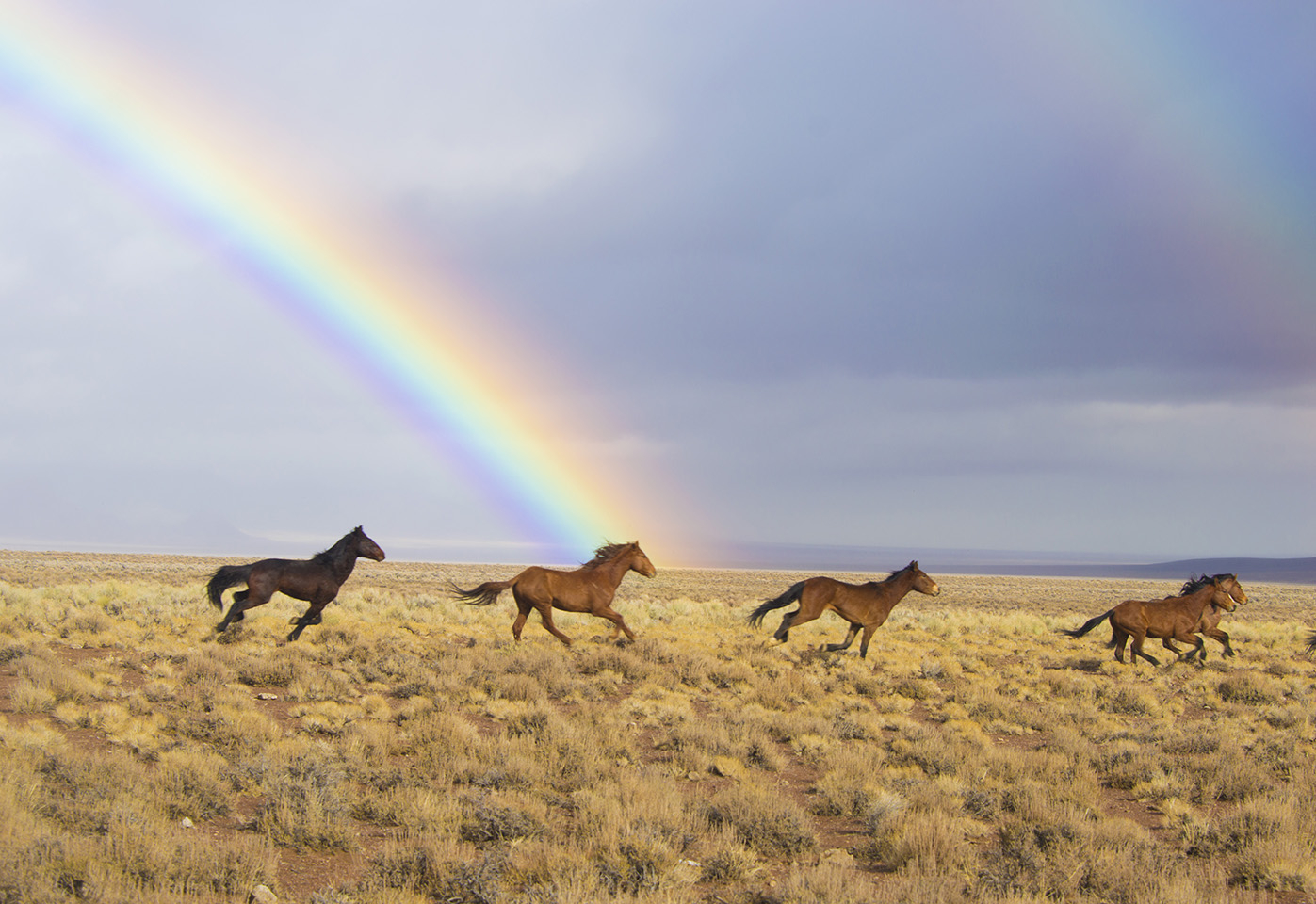
Humans first domesticated horses thousands of years ago. A domesticated animal is one that’s been tamed and raised by humans. It is used as a pet or work animal. Black Beauty is an example of a domesticated horse.
Horses are native to Asia and Europe. They are not native to North America. North American wild horses descended from domesticated horses brought here by Spanish explorers. Technically, this means that the horses are feral and not wild—but we still generally refer to them as wild. A feral animal is an animal that was once domesticated (like a dog, cat, or horse) but now lives in the wild.
Wild horses roam two main regions of North America: the west and the east coast. Here are some of the best places to see wild horses in each of these regions.
The Wild Mustangs of the West
Mustangs are a pretty cool breed of horse. They’re intelligent, sturdy, and easy-going once they’re tamed. They come in different colors and patterns and tend not to be very tall.
The wild Mustang is a symbol of the American frontier and the American pioneer spirit. Wild Mustangs live in the western region of the United States and Canada. The federal government manages the wild horse populations in the United States. It allows them to roam in protected park areas. Wild horses can be found in Arizona, California, Colorado, Idaho, Montana, Nevada, New Mexico, Oregon, and Utah. In Canada, you can find them in British Columbia and Alberta. You can see wild Mustangs in many places in the west.
The Virginia Range in western Nevada hosts a well-known herd of horses. It is called the Virginia Range herd. This herd is also called “Annie’s Horses” after a woman named “Wild Horse Annie.” She worked for years to get Congress to pass laws to protect these and other wild horses in the United States. More than half of North America’s wild horses live in Nevada.
Theodore Roosevelt National Park in North Dakota is another great place to see wild Mustangs. You’ll have the best view of the herds from a high point, such as Painted Canyon Overlook or Buck Hill.
The Pryor Mountains in Montana and Wyoming near Bighorn Canyon are home to about 160 wild horses. The Mustangs in this region have special markings. Many have a stripe down their backs and stripes on their legs.
The Wild Horses of the East Coast
On the east coast, wild horses reside on coastal islands from Maryland to Georgia. The most famous of these horses are actually ponies. Ponies are smaller horses. They live on the islands of Assateague (Maryland) and Chincoteague (Virginia). Both islands are largely made up of national park areas. You are allowed to camp there if you like. You can set up your tent on the beach and watch the wild ponies roam from a safe distance.
There’s an annual wild pony round-up called the Chincoteague Island Pony Swim. Each year professional horse wranglers round up some of the younger ponies. They swim them across the Assateague Channel during low tide. It only takes the ponies about three minutes to swim across the channel. Afterwards, people can purchase these ponies in an auction. The ponies then go home with their new owners. Doing this helps keep the pony population from getting out of control.
Assateague and Chincoteague became famous after the children’s book Misty of Chincoteague was published in 1947. The book tells the story of a family that adopts the lovable Misty, a young foal born to a wild mother on Chincoteague Island.
The Outer Banks are a series of islands. They are just off the coast of North Carolina. Thousands of wild ponies once lived there. Today, only a few hundred ponies still wander the Outer Banks today.
Cumberland Island in Georgia offers a unique horse-viewing experience. Much of the island is a federal nature reserve. Cars aren’t allowed on the island. You can take a ferry to get to the island. Then you can choose to walk or bike around the island. Large plantations occupied the island in the 1800s. As you walk around the island, you can see both wild horses and the ruins of the old plantations.



 About BeeLine
About BeeLine